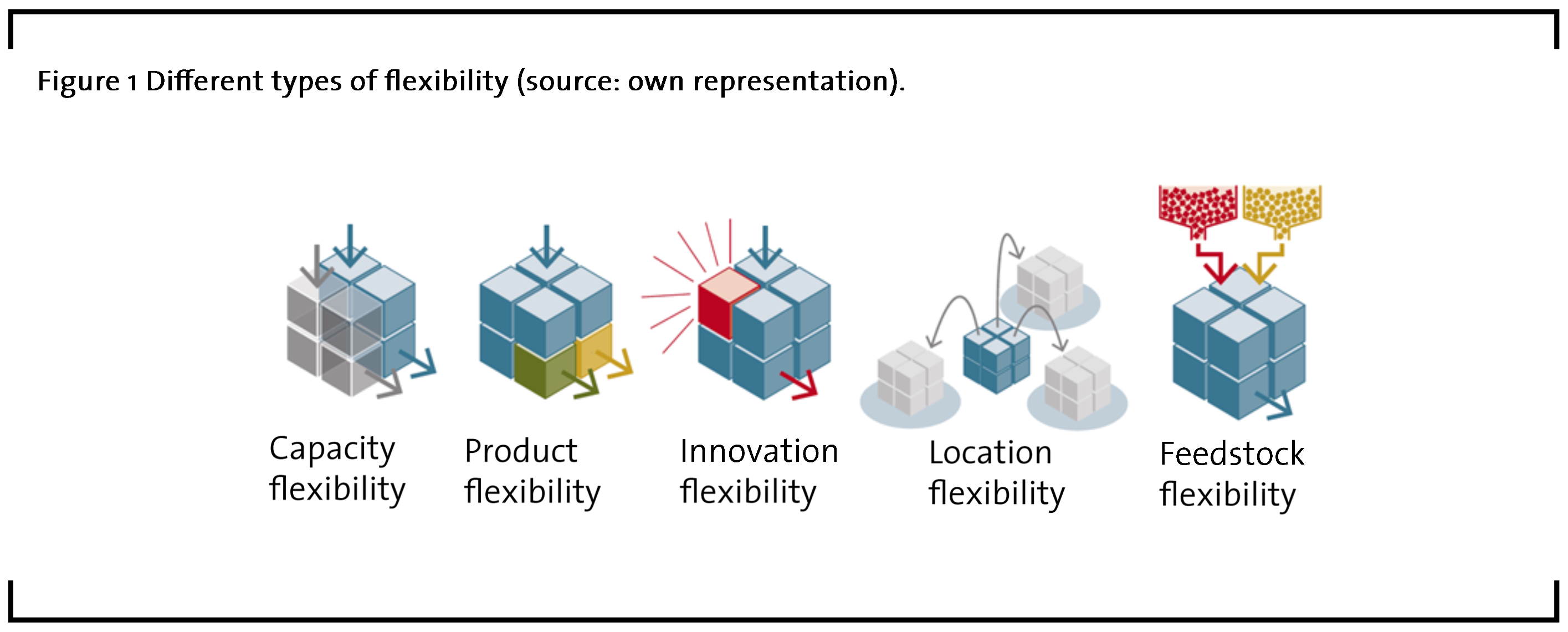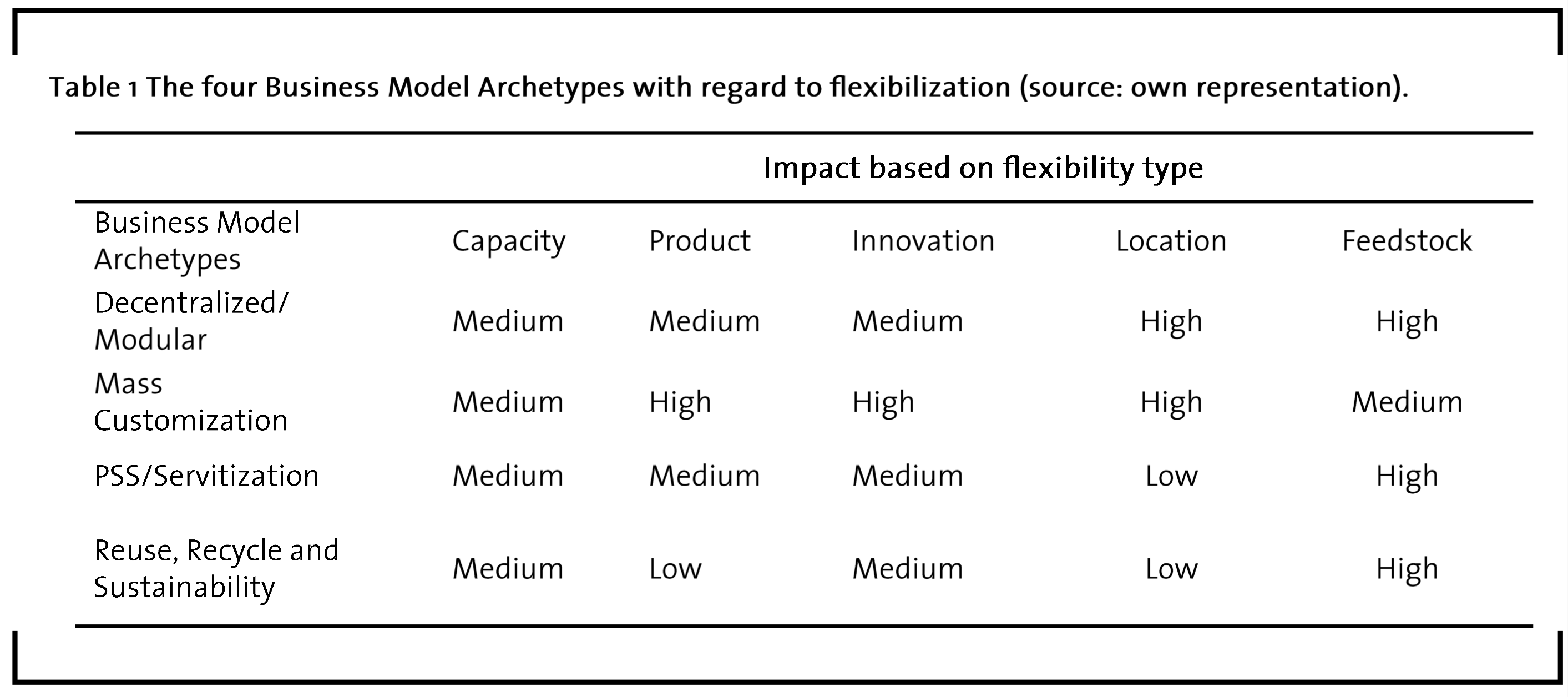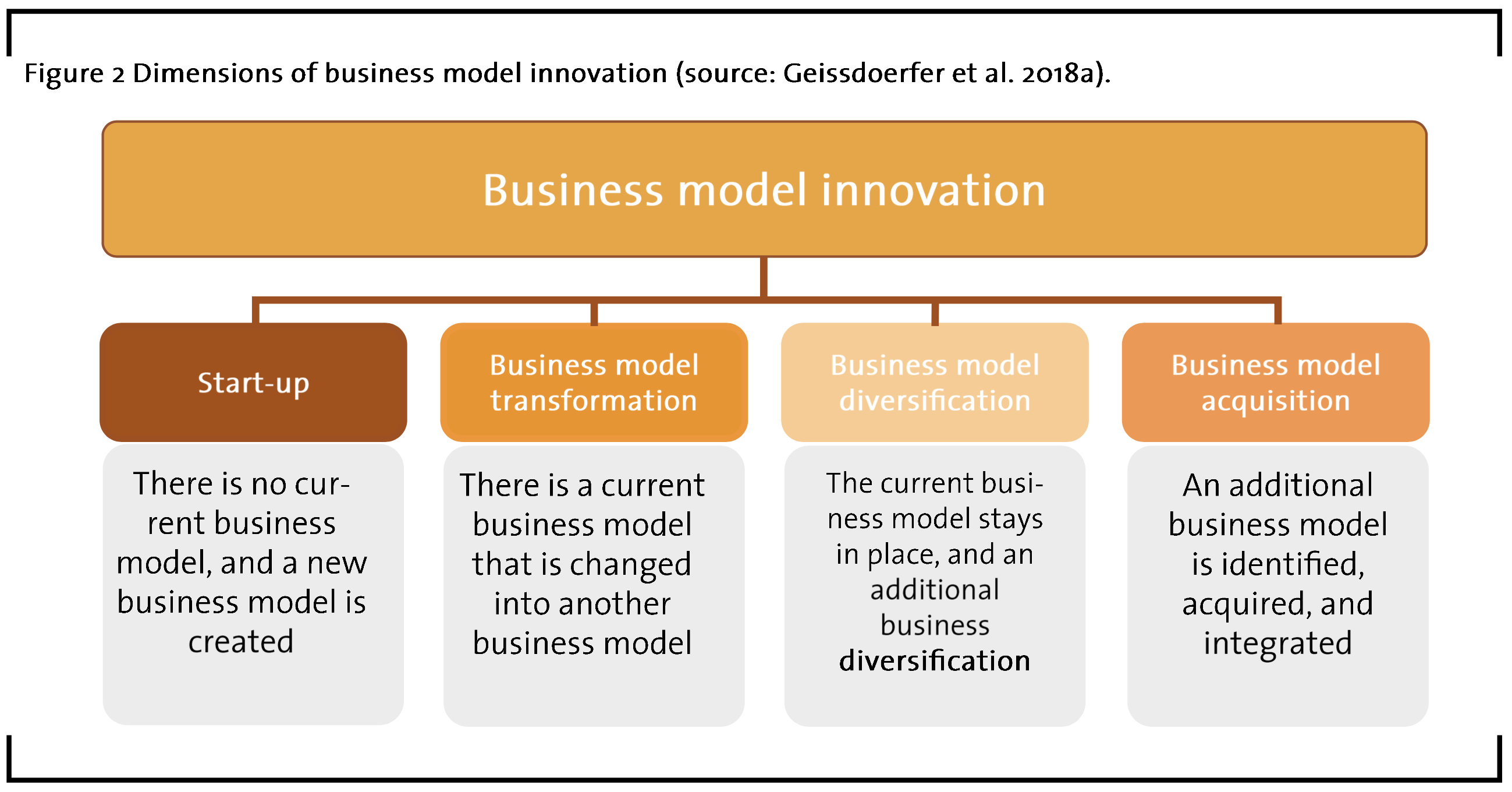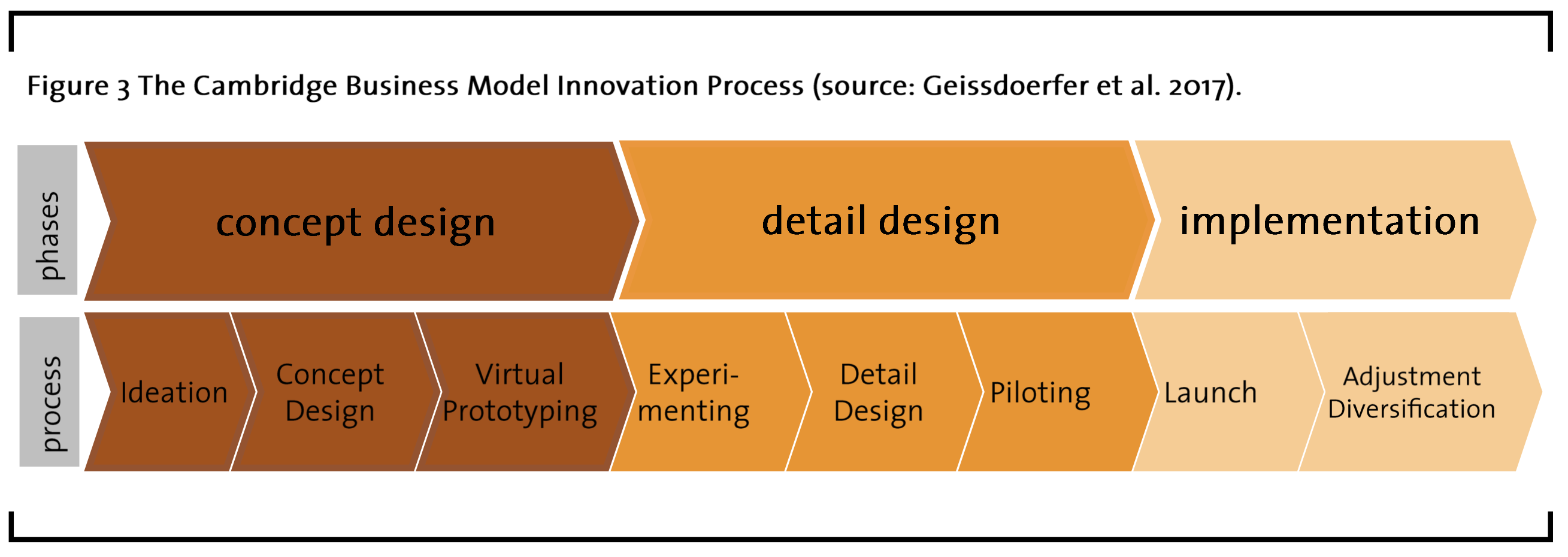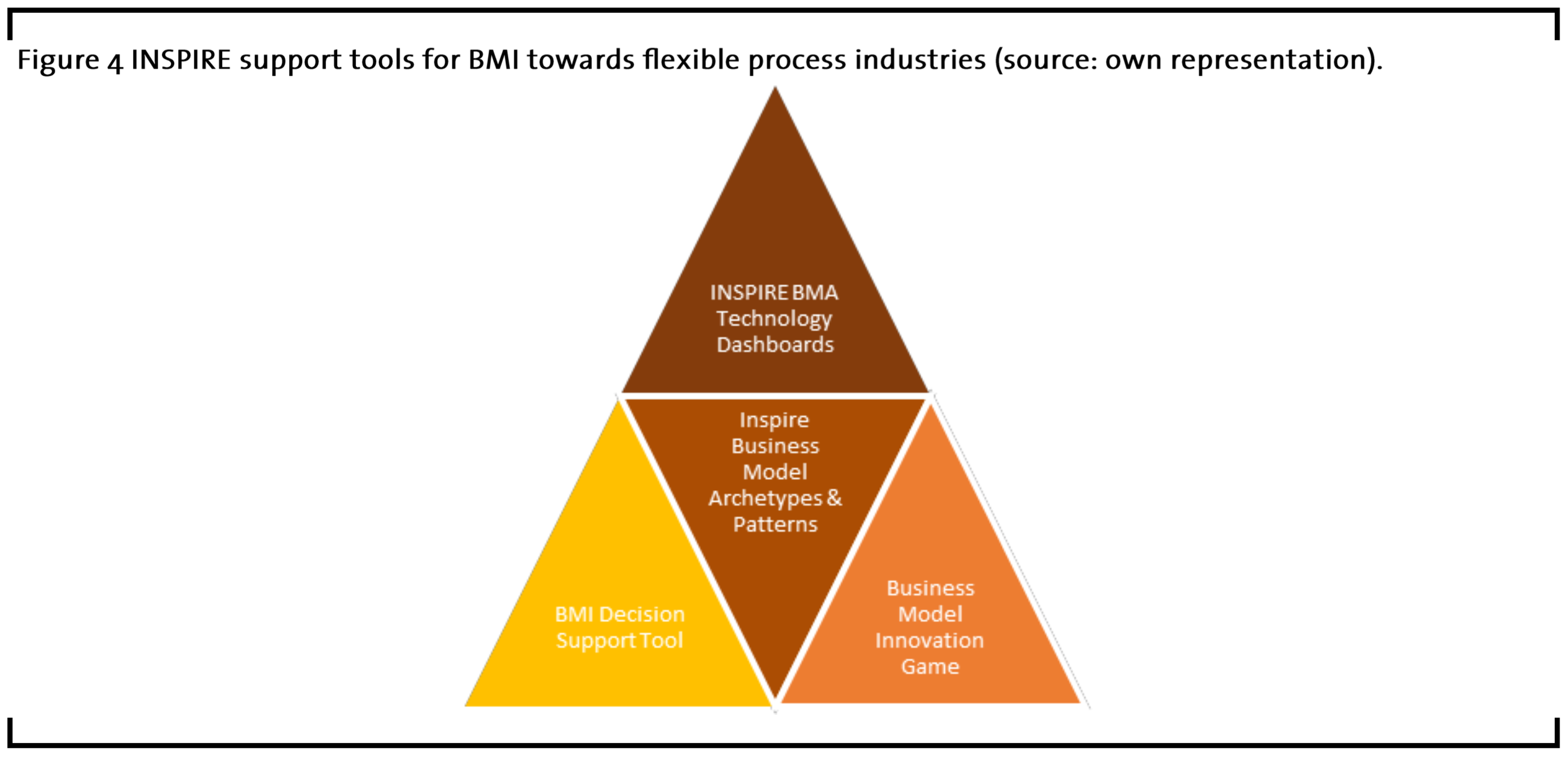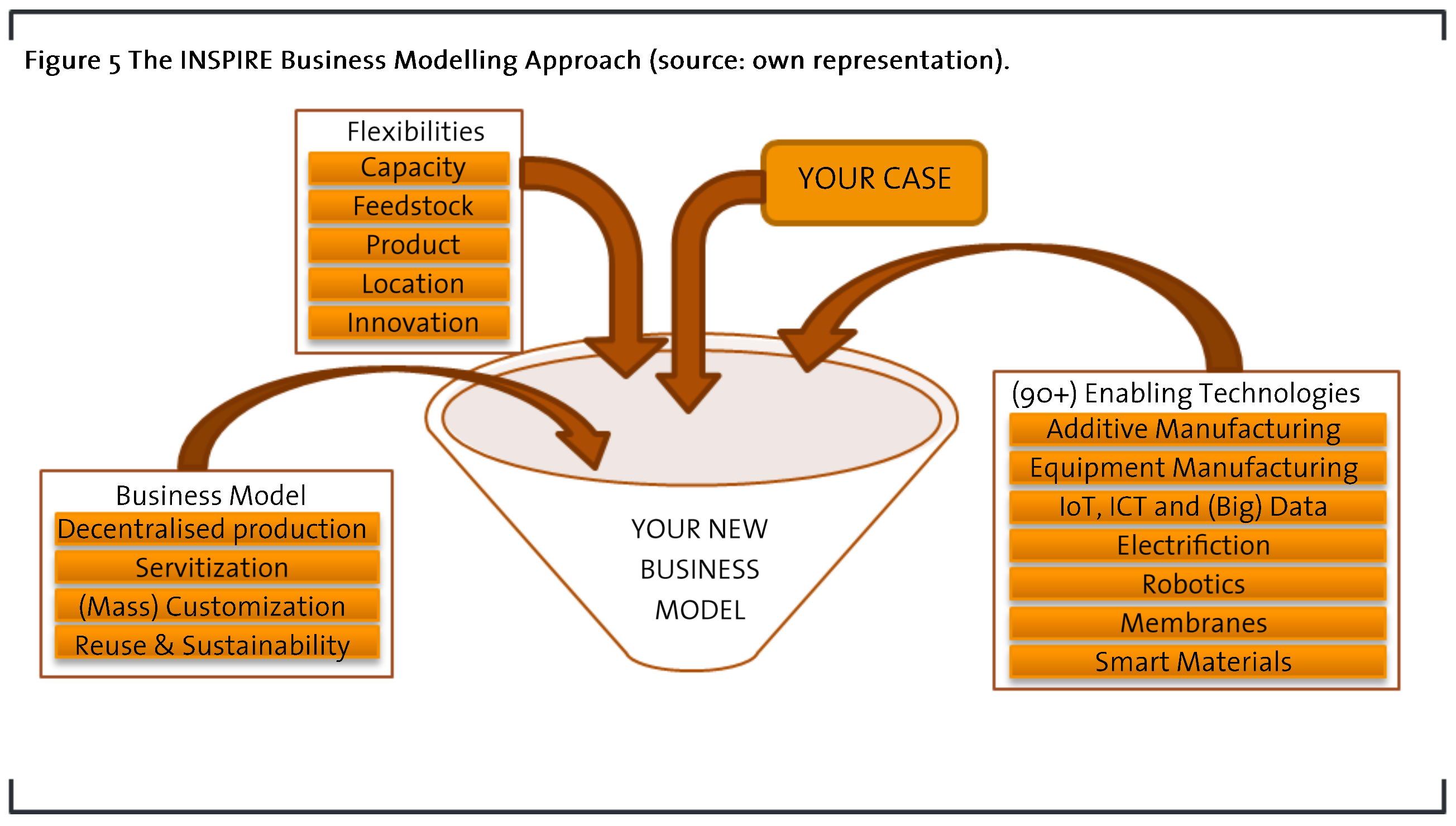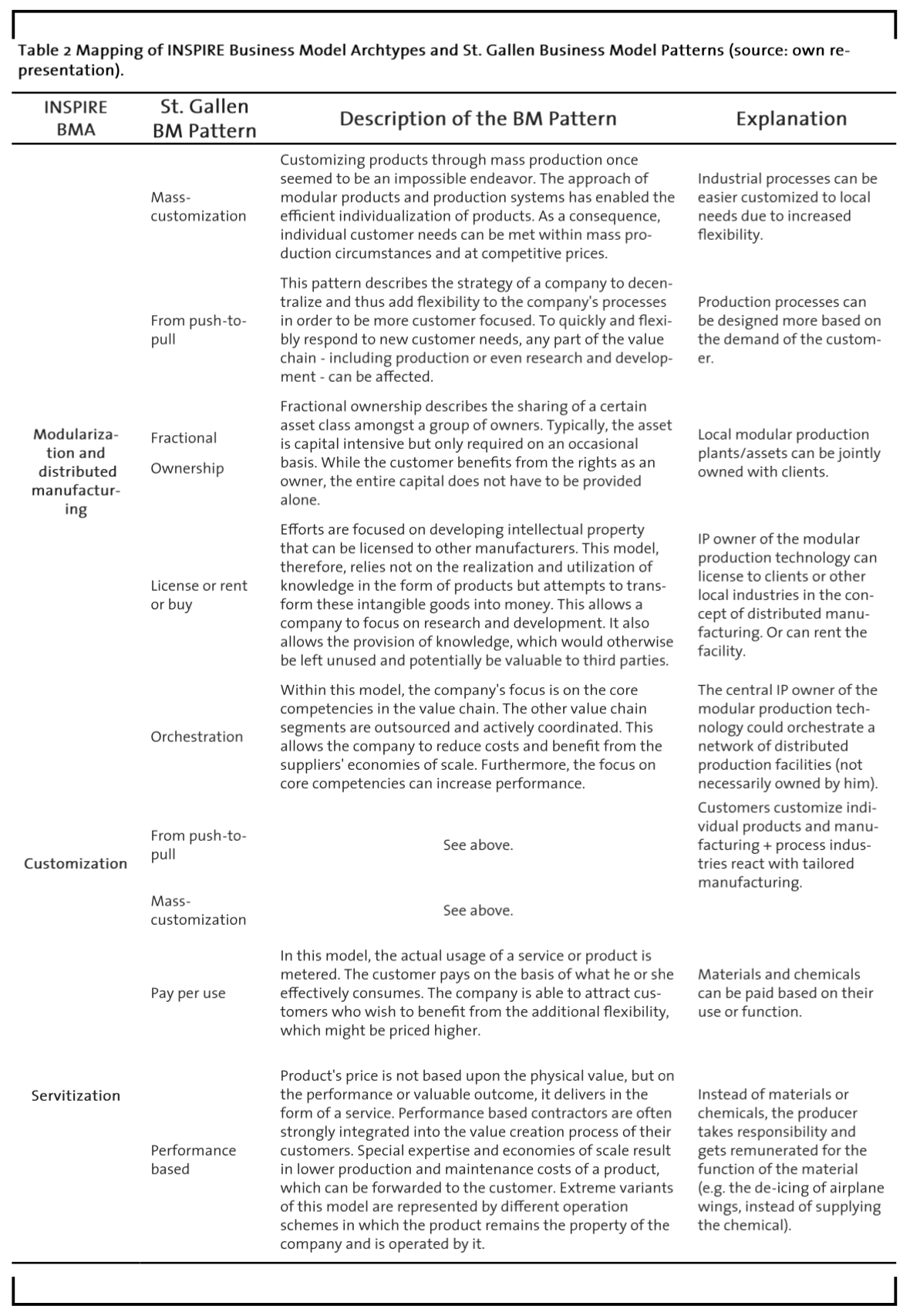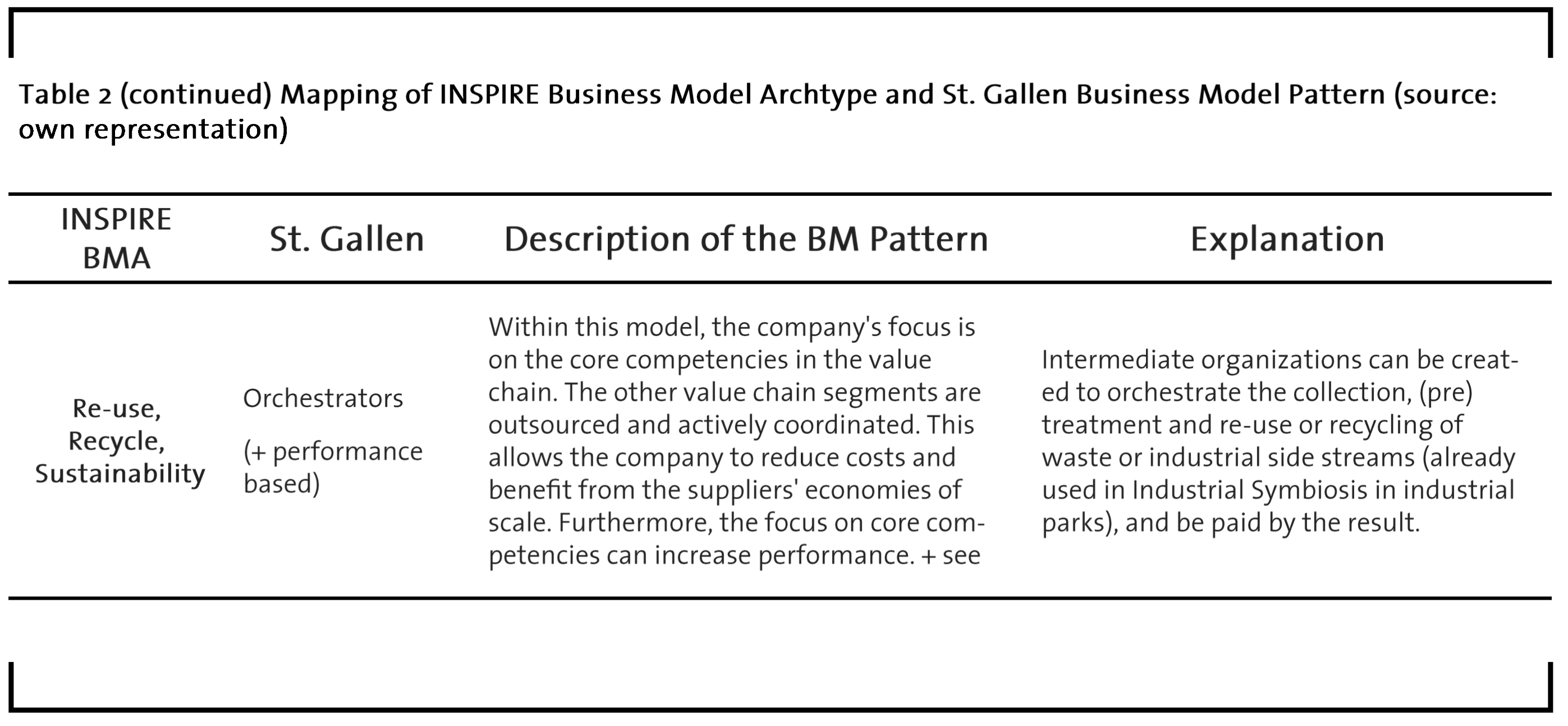Managing business model innovation for relocalization in the process and manufacturing industry
Abstract
More and more industrial activities are performed outside of Europe. INSPIRE is a project, that is driven by the European process industry in order to facilitate the relocalization of process industry value chain activities to Europe. Within the project four business model archetypes (BMA) that facilitate this relocalization were identified: decentralization and modularization, mass customization, servitization and product service systems (PSS), circular business model, by name Re-use, Recycle and Sustainability (RR&S). For companies that want to adopt these business models, we have developed four INSPIRE Tools to integrate flexibilization into process industry business models concepts: Technologies Dashboard for the 5 INSPIRE BMA’s1, Business Model Innovation (BMI) Game, BMI Decision Support Tool for each BMA, and Business Model Archetype Revenue Pattern Map. This article presents the main results and partly reprints other relevant aspects from the INSPIRE deliverable D 4.4. It aims to provide recommendations for decision makers to choose the right business model given their specific context and key parameter.
1 The Emerging Energy Carriers business model archetype is not part of this article.
1 Introduction
Traditionally, innovation is perceived as a result of R&D department’s activities carried out by engineers, chemists or material researcher. However, findings from e.g. the Boston Consulting Group (2008) have shown that “business model innovators have been found to be more profitable by an average of 6% compared to pure product or process innovators” (Gassmann et al., 2014).
For many managers and decision makers the concept of business model and its innovation is still vaguely defined and its application to their own business remains difficult. The INSPIRE project examined over the course of two years trends for Business Model Innovation (BMI) in the process and manufacturing industry. The specific background for the INSPIRE project has been the request from the European Commission Horizon 2020 call for proposals to look at “Business models for flexible and delocalized approaches for intensified processing.” INSPIRE has hence focused on those BMI trends that contribute to flexibilization of the process and manufacturing value chain, which according to previous studies, is amongst the main drivers to keep industry (or bring back to) in Europe (INSPIRE Deliverable, 2017). This contribution provides interested stakeholders related to the process and manufacturing industry a summary overview of these practical learnings and tools in the context of BMI processes. It guides the BMI practitioner from these stakeholders in the steps to take towards possible business model innovation. In doing so, it provides a framework for the dynamic evaluation of the proposed business models as opposed to static evaluation:
- paving the way for dynamic monitoring of key supply chain parameters and factors (e.g. labor costs, production costs, raw material availability, market attractiveness, financial stability of suppliers, etc.) and analyzing the long-term impact of the novel business model proposed;
- considering the possibility of switching from one business model to an alternative in the medium term.
This article equips the reader with guidelines on how specific business solutions that INSPIRE developed could be implemented in order to assess and decide about BMI that are relevant for the process industry.
The topic of BMI has gained a lot of interest over the past years from practitioners and researchers alike. The article starts with a brief recap of the business model concept on how it was defined in the INSPIRE project.
Thus, a business model consists of the (1) value proposition (product-market combination), (2) value creation and delivery (configuration and implementation of value creation activities) and (3) value capture (the revenue model) and the interaction of these elements (Geissdoerfer, 2018a). Other frameworks following a similar logic are, for instance, Osterwalder and Pigneur (2010) and Gassmann et al. (2014).
INSPIRE has taken this business model concept to study business model innovation in the process and manufacturing industry with regard to flexibilization. In rapidly changing and volatile markets, flexibility is a key factor to strengthen the position of Europe (Ecorys, 2009).
Figure 1 illustrates the different types of flexibility for companies in the process and manufacturing industry. In order to react to fluctuations in terms of demand or feedstock/energy prices, companies should be able to adapt production accordingly while being cost efficient at the same time (capacity flexibility). Likewise, companies should be able to switch to another product (product flexibility). In this context the innovation flexibility denotes the ability to carry out R&D and pilot settings at production sites. Another aspect relates to the location. Either the place of the production or the production plant itself should be easily moveable (location flexibility). Furthermore, companies should be able to handle different kinds of feedstock (feedstock flexibility). The INSPIRE project has identified and defined four business model archetypes2 (BMA) that respond to major societal trends, and contribute to five types of flexibility.
2 We follow the established terminology of Bocken et al. (2014), which uses the term archetypes for more or less generic strategies or templates.
In a previous publication we described these archetypes, identified the main enabling technologies, their maturity levels, related research needs, besides defining a number of decision factors, possible bottlenecks/challenges and solutions (INSPIRE Deliverable D3.2., 2018). These technologies, decision factors, bottlenecks/challenges, and solutions for the different archetypes are mostly concerned with types of the products/services to be offered, the availability/capability of the suppliers locally in Europe or globally to provide such products/services, the supply chain structures considering the characteristics of the partners and competition, demand profiles and customer needs. Therefore, together these may be used to assess if a specific business model archetype is relevant for a sector or an industry, or how they could be made relevant.
This article therefore provides BMI guidelines with relevant information and a BMI process to be followed. The four tools developed by the INSPIRE project related to these business model archetypes are:
- Technology Dashboard for each Business Model Archetype, indicating which cluster of technologies enable this BMA and what their maturity level is.
- Business Model Innovation Game, for each BMA, that allows multiple stakeholders to reason about their value chain, based on the available enabling technologies and a number of objectives.
- Decision Support Tool, that enable decision makers to score decision factors for each BMA to assess if its industry is “BMI ready” based on a calculated “BMI index”. The Decision support Tool also provides for each BMA insights in the ke y challenges, and which possible solutions are available in the market to overcome those.
- INSPIRE Business Model Archetype Patterns, that matches the INSPIRE BMAs against the 55 St. Gallen Business Model Patterns and serves as an inspirational tool to consider innovative value propositions and revenue models for the INSPIRE archetypes.
This article is organized the following way. After giving a short introduction, we will provide a summary of the academic background on BMI to create a common understanding of the underlying theory. Then, we will provide a more practical insight on how BMI in general takes place in industries, more particularly which tools are available to support the main steps in BMI from business model ideation, through conceptual design, experimentation up to the launch of new business models and their fine-tuning. We will then explain new BMI support tools that INSPIRE adds to this portfolio of BMI instruments, and provide guidelines and suggestions on how to use these tools in a BMI process.
2 Theoretical background
Parts of this chapter are taken from Geissdoerfer et al. (2016, 2017, 2018a).
2.1 A new form of innovation: Business model innovation
Research on business models has increased significantly in the period from 1980-2015 (Foss and Saebi, 2017). The concept gained wider popularity during the dotcom boom of the 1990’s. As new, innovative revenue mechanisms were introduced the business model concept came into wider use as a means for communicating complex business ideas to potential investors within a short time frame (Zott et al., 2011). From there, the concept has developed into a tool for the systemic analysis, mapping, planning and communication in face of organisational complexity (Doleski, 2015; Knyphausen-Aufsess and Meinhardt, 2002).
Different authors conceive the business model concept either as a model of an organisational system (e.g. BaBaden-Fuller and Morgan, 2010; Knyphausen-Aufsess and Meinhardt, 2002), as an abstract characteristic of an organisational unit, (e.g. Osterwalder and Pfigneur, 2010; Teece, 2010), or with a reduced scope that equates the term with individual elements of other authors’ definitions or reduce it to achieve certain means (e.g. Doganova and Eyquem-Renault, 2009).
Most definitions of this concept emphasise the role of value creation, more or less following the categorization of Richardson (2008), value proposition, value creation and delivery, and value capture, while some authors also add the value network (e.g. Zott and Amitt, 2010). For this research, we define business models as, “simplified representation of the value proposition, value creation and delivery, and value capture elements and the interactions between these elements within an organizational unit.” (Geissdoerfer et al., 2018a, p.402)).
The creation or adaption of business models is referred to as business model innovation. Most authors refer to business model innovation as a change in the configuration of either the entire business model or individual elements. Consequently, companies align the elements as a reaction to opportunities or challenges in the environment or as a vehicle for diversification and innovation. In this regard, the concept mainly has been applied in corporate diversification (Ansoff, 1957), business venturing and start-up contexts .
For this research, we define business model innovation as, “the conceptualisation and implementation of new business models. This can comprise the development of entirely new business models, the diversification into additional business models, the acquisition of new business models, or the transformation from one business model to another. The transformation can affect the entire business model or individual or a combination of its value proposition, value creation and deliver, and value capture elements, the interrelations between the elements.” (Geissderfer et al. 2018a, p.405f.)
2.2 The Cambridge Business Model Innovation Process
The Cambridge Business Model Innovation Process, as depicted in Figure 3, describes the different steps, key activities, and challenges of business model innovation.
According to the framework, the phases of business model innovation are:
- Ideation: The purpose of the business model innovation and its key stakeholders are defined, and the value proposition and first conceptual ideas are ideated.
- Concept design: A first rough conceptualization of the key business model elements is developed and documented.
- Virtual prototyping: A range of prototypes is generated and revised to refine and communicate the business model concept. The phase also comprises benchmarking with solutions and concepts from other parties.
- Experimenting: Key assumptions and variables of the concept are tested in simulations and field experiments, ideally through randomized controlled trials.
- Detail design: An in-depth analysis and detailing of all the elements of the business model and interactions between these elements is conducted.
- Piloting: The entire concept is tested by running a first limited version of the business model in a subsection of the target market.
- Launch: The business model is rolled out across all responsible organizational units and the target market.
- Adjustment and diversification: The business model is revised according to initial plans, expectations, and strategic fit. Based on this evaluation, adjustments and diversifications are made and, depending on the comprehensiveness of the necessary changes, the entire business model innovation process may be repeated.
However, not all business model innovation processes will go through each of the steps. For example, a business model project team might decide to skip experimentation and launch a new product or service without testing whether the underlying assumptions of market acceptance and willingness to pay actually apply.
Furthermore, the process is not linear but iterative and repetitive, the business model team might go back and forth between phases, sometimes omitting one or several, learning from mistakes and pivoting towards a solution that gets traction with a viable customer segment. Once the business model is launched it might go through the entire process again to adapt to a change in its ecosystem and the macro environment. This process obviously has some overlaps with concepts like the Lean Start-up (Ries, 2011) and Design Thinking (Plattner et al., 2011). While it was conceptualized in order to integrate these concepts advantages, like instant and meaningful customer feedback, it is a more comprehensive approach that addresses a range of these concepts’ disadvantages.
3 Tools for Business Model Innovation
3.1 Review of existing tools
In order to translate insights on business model and its innovation from academic research into business practice several tools can help organizations to guide the process. Geissdoerfer et al. (2018) refer to a design-implementation gap of business model innovation as the accumulated challenges along the business model innovation process that lead to failures and non-implementation (Geissdoerfer et al., 2018a).
The review and brief description of seven tools are summarized in Table 1: (1) Value Mapping Tool (Bocken et al., 2013), (2) Value Proposition Design Tool (Osterwalder et al., 2014), (3) Value Ideation Tool (Geissdoerfer et al., 2016), (4) Business Model Canvas (Osterwalder and Pigneur, 2010), (5) Business Model (Gassmann et al., 2014), (6) Business Model Archetypes (Bocken et al., 2014), (7) Cambridge Business Model Innovation Process (Geissdoerfer et al., 2017).
3.2 Dedicated tools for BMI for flexibilization in the process industry
The different tools for BMI proved to be effective for guiding companies in the BMI process. However, all support tools are rather generic and don’t explicitly focus on the process industry and its characteristics. So, while harnessing the aforementioned tools, we added specific “flexibility in process industry” elements for the purpose of INSPIRE’s project objectives.
INSPIRE has developed practical results that can provide these elements for the five Business Model Archetypes (BMAs), and can as such be integrated and combined with the existing toolset described in section 2 and the general BMI value system as inspired by the Business Model Canvas. These tools are the following:
- Technologies Dashboard for the 4 INSPIRE BMA’s
- Business Model Innovation Game
- BMI Decision Support Tool for each BMA
- Business Model Archetype Revenue Patterns Map
These INSPIRE tools provide specific and complementary added value with respect to the existing generic tools:
- They provide dedicated support tools for business model innovation (BMI) towards 5 key trends in the process industry (modularisation of the value chain; (mass) customisation of products, processes and services; servitization; recycling, re-use and sustainability, and digitization of the value chain), so being more specific than general tools.
- They provide support to reason about specific technologies, that are relevant for these BMA’s and the extent to which they are mature enough or if further research is recommended. Existing BMI tools are more general, and do not take a “technology view”.
- They provide a “serious game approach” towards value chain Business Model Innovation, potentially involving multiple value chain partners. One of the learnings of the INSPIRE project is that for all of the Business Model Archetypes a systems approach, value chain collaboration and even aligned business cases between the value chain partners maybe a critical success factor. The INSPIRE BMI game provides a dynamic “out of the box” but guided process to take a value chain view as input to the BMI (ideation) process.
- They introduce the concept of BMI readiness for the four BMAs, as well as an index which could be used to benchmark the BMI readiness of one company, in the future possibly against the sector baseline. The INSPIRE project only made a limited number of test surveys to calibrate and prioritize the scoring factors. But in the future we could use this concept to do a broad sector specific survey with a large number of industries, which would lead to a general BMI readiness index per sector per BMA, as a baseline against which companies could benchmark themselves. In the meantime, the Business Model Decision Support tool, can be used by managers to reason about the “fitness” of a specific Business Model Archetype for their company or business eco-system.
- They provide practical solutions to think about, when designing the new Business Model for the value chain, to overcome concrete challenges/bottlenecks and improve the BMI index as initially calculated.
- They provide inspirational suggestions for Revenue Model innovation, by mapping specific process industry relevant Business Model Archetypes, against 55 revenue model patterns based on academic research carried out by the University of St. Gallen.
Like depicted in Figure 4 the INSPIRE tools hence add value to the existing tool system, by adding a specific layer dedicated to flexibilization in the process industry, interacting and enriching the current support systems (Cambridge Business Model Innovation Framework & support tools and the Business Model Innovation Value System).
The support tools can be used separately and in random order, within the iterative Business Model Innovation process. However, it is advised to start with the Business Model Innovation Game, as it provides a higher-level value chain view using the enabling technologies Dashboards as input. In a second moment the business models of individual value chain stakeholders can be used for a detailed business model design, also using the other more general support tools.
3.2.1 Technology Dashboard
Technology innovation is accelerating every year, and continuously offering new opportunities (as well as threats) for business model innovation. Particularly, INSPIRE technologies are enabling new Business Model Archetypes:
- Process intensification enables process industries to develop smaller, modular or even mobile (“containerized”) production processes, that open-up the opportunity for modular flexible distributed production and related “from central-to-distributed” business models;
- New production technologies such as 3D printing, open-up opportunities for more (mass) customization and new “from push-to-pull” business models;
- New sensors and monitoring technologies facilitate the emergence of Servitization concepts moving “from product to service” business models, where performance-based contracts substitute traditional product or materials sales agreements;
- New lower-cost selective separation and recycling technologies, open-up new opportunities for stakeholders to innovate business models and grasp novel market opportunities by valorizing resources that were previously considered waste, “from linear to circular business models”.
- New energy technologies such as solar, wind or biomass, open-up new opportunities for novel business relationships between energy consuming industry and electricity supplier in a synergetic way. New energy carriers such as hydrogen, ammonia, methanol and formic acid can be used to store and release energy where needed facilitating “from on-directional to open business models” where collaboration with partners in the ecosystem becomes a central source of value creation.3
3 As indicated before, the Emerging Energy Carrier Business Model Archetype is not part of this article, but mentioned here for the sake of completeness.
It is expected by the INSPIRE consortium that these types of Business Model innovation will further proliferate in the market, leveraging on continued technology innovations. INSPIRE therefore identified for each of the four Business Model Archetypes, the key technology clusters that may enable breakthrough Business Model Innovation in the near future.
We summarize the main technologies and their Dashboard for each BMA. The detailed description and analysis can be found at INSPIRE deliverable 4.4 (2018). We recommend stakeholders in the process and manufacturing value chains to consider those clusters as enablers for their BMI process.
3.2.2 Business Model Innovation Game
The Business Model Innovation Process starts with the ideation phase, in which the purpose of the business model innovation and its key stakeholders are defined, and the value proposition and first conceptual ideas are ideated. One of the learnings of the INSPIRE project is that for all of the INSPIRE Business Model Archetypes a systems approach, value chain collaboration and even aligned business cases between the value chain partners maybe a critical success factor. The INSPIRE BMI game provides a dynamic “out of the box” but guided process to take a value chain view as input to the BMI (ideation) process. It provides a “serious game approach” towards value chain Business Model Innovation, potentially involving multiple value chain partners. It leverages and integrates the key INSPIRE results:
- The 44 process industry Business Model Archetypes (dedicated playing cards to design relevant supply chains – looking at the key Business Canvas elements Supply, Demand, Cost, Revenues and Eco-system).
- The technology Dashboards (different technology playing cards for each BMA).
- The INSPIRE objectives to stimulate flexibility, resilience, business model innovation and EU reshoring (playing cards integrating flexibilities and assess cards for each objective).
4 Would be 5 when including the Emerging Energy Carrier Business Model Archetype.
The INSPIRE Business Model Innovation Game is an infotainment tool, to be played in a workshop. It helps individual companies or multiple stakeholders and decision makers reason about how to innovate their business model in the supply chain.
3.2.3 INSPIRE Decision Support Tool
Once the ideation process generated a specific interest in a Business Model Archetype, the INSPIRE BMI Decision Support tool, provides an instrument to test the industry on its “fitness” for the specific Business Model Archetype.
We have designed the tool as an Excel Tool that guides an industrial manager or decision maker in his process to assess key decision factors, which have been validated by the INSPIRE project with industries and experts in the market. Key factors that determine whether an industry decides to develop a new business model vary per Business Model Archetype. Based on the weights and scores obtained from the industry stakeholders through surveys, this decision support tool enables the managers to focus on a “few critical factors” that are most influential on the fitness of the business model archetype for a particular company. The parameters (e.g., labor cost, production cost, network structure, capacity, etc.) related to these few important factors could be monitored over time to be responsive to changes in the business environment.
The Excel tool is composed by different spreadsheets on which, a set of instructions on how to complete the highlighted cells is presented. There is the “Current Situation” tab, which allows an easy comparison between the results from the surveys and the internal view from the company. The tool also helps companies to review how their future situation will be, under different scenarios. This analysis is made in the “Future Scenario” tab, where the new Scenario Impact is added, aiming to help companies understand the future impact of the factors. Additionally, a benchmarking tool is also included in the tool, aiming to help companies to compare their performance on each factor versus the average performance for each archetype. It allows an easy overview in which factor the company is ahead or lagging behind, compared to the average performance of companies within the archetype. Currently, the tool is in a conceptual stage and will require a sector to take up the task to create a statistically meaningful benchmark tool. Until then, the tool can be used as a support to reason about the individual and combined factors that need to be taken into account when deciding about BMI.
3.2.4 INSPIRE Business Model Archetype Patterns
90 % of innovations emerge from re-combinations of previously existing concepts. The INSPIRE toolbox leverages on the work of the University of St. Gallen that analyzed 250 business models from over the last decennia, resulting in 55 business model patterns. Applying those patterns to the INSPIRE Business Model Archetypes, offers an inspiring map for industry stakeholders that wish to engage in business model innovation within the process industry (Gassmann et al., 2014). We found that at least 15 of the 55 business model patterns, have potential applications within the INSPIRE BMA’s, providing particular inspirational ideas for novel Revenue and Value proposition innovations in the process industry (see Table 2).
4 Integration of the INSPIRE tools in the Cambridge Business Model Innovation Framework
In this section we first discuss how the INSPIRE toolkit can complement existing tools to provide a comprehensive toolkit for conceptualizing new relocalization business models. In this section, we illustrate how the newly developed INSPIRE tools can be combined with other existing tools to have comprehensive tool support along the business model innovation process. We explain how this can help managers to make choices in BMI based on the specific characteristics of their organization and the particular context of their BMI project (type of business, customer segment, company size, market trends, etc.).
While the tools presented in section 2 and 3 can be combined at the discretion of the manager in charge with regard to the specific context of the business model innovation project, we want to suggest one comprehensive path to combine different tools along the Cambridge Business Model Innovation framework that integrates the INSPIRE toolkit with a deliberate focus on relocalization models. To use this path for your relocalization focused business model innovation project, just follow these 11 steps; as indicated this is not a purely sequential but deliberately iterative exercise:
- We start with the Cambridge Business Model Innovation Process*5. We use a poster without the entries to plan the process with the responsible executives. The participants individually put sticky notes with proposed content for key activities and challenges to each of the phases and discuss and add to them afterwards. The resulting poster can be kept as a communication tool and a constant reminder of the initial plan in the working space of the business model innovation team. (Geissdoerfer et al., 2017)
- We use the INSPIRE Business Model Innovation Game* to take a higher-level value chain view of Business Model Innovation, with the 4 INSPIRE Business Model Archetypes and related Technology Dashboards as inputs. You may use the INSPIRE Business Model Archetype Templates* that summarize the BMAs and technology Dashboards to support Game. This allows you to explore value chain collaboration opportunities and align business cases with your value chain partners. If you are considering modularization BMI, you may need to consider what that does to the full value chain, and how it changes your relations with transporters, regional clients etc. If you have potential partners and suppliers in place, invite them to joint workshops, if not, start with your project team and affected executives and identify and include partners based on the outcome.
- We use the INSPIRE Decision Support Tool* to get an impression of which business model best fits the current resources and capabilities of the participants’ organization or involved organizational units and objectives. The tools can be used in a workshop setting by discussing each factor with the participating executives or as a survey by asking a target audience to individually filling out the tool’s questionnaire and sending it back. The results can then be aggregated and communicated back to the participants. It will provide the users with valuable guidance on which decision factors to consider for a specific BM Archetype, which are the main challenges and potential bottlenecks and what solutions can be considered to increase success chances for the Business Model Innovation.
- With the most appropriate business model in mind, we are engaging in the Value Ideation* process. The workshop is facilitated with key executives and representatives or proxies of key stakeholder groups, e.g. a sales person from a supplier or – if they are not available – a procurement manager from the organization. After a value mapping exercise, the generated value proposition ideas are prioritized and prototyped. The resulting prototypes are discussed and improved and key insights are documented for dissemination within the organizations and as an input for the next steps (Geissdoerfer et al., 2016).
- In this phase of the process, the Business Model Patterns from the Business Model Navigator can be used to reason about the most appropriate revenue model for the Value proposition. We have selected the most adequate of the 55 revenue mechanism templates and associated them to the 4 INSPIRE Business Model Archetypes for relocalisation. The resulting (see INSPIRE Business Model Archetype Value Patterns tool*) can be used to select and combine the most adequate revenue mechanisms. Please do also quickly check the remaining 40 revenue models; if you aim for a social or environmentally friendly model (especially if you go for the RR&D archetype), you can also find inspiration in the Sustainable Business Model Archetypes (Gassmann et al., 2014, Chapter 1, Bocken et al., 2014).
- The created value proposition from (4) and revenue mechanism from (5) are now transferred to the respective fields of the Business Model Canvas*. Based on this, all other fields are ideated in a workshop setting. First, every participant ideates on sticky notes and put them to a poster of the canvas. Subsequently, the post-its are discussed within the group and additional ideas are added. Once completed the result is prototyped and discussed following the respective steps of the Value Ideation tool* used in (4). The results of this are transferred back to the canvas, which serves as a means for dissemination and as an input for the next steps (Geissdoerfer et al., 2017; Osterwalder and Pigneur, 2010).
- The INSPIRE Technology Dashboards* can be used again to identify and research the key technologies to realize the business model concept documented in the business model canvas (6). The technologies are discussed in a group meeting and the key technologies to realize the business model in the specific context of the organization are selected. These technologies are the investigated in desk research and the results are discussed and documented. Also, the INSPIRE Deliverable regarding research needs (D4.3) may be consulted for further input in the discussion on the technology aspects.
- Based on the findings of (4), (5), (6) and (7), hypotheses of key enablers and barriers are formulated. For example, for the RR&S model, it might be essential that customers are willing to pay a certain amount for a remanufactured product. Based on the hypotheses an experiment is designed to test it. For example, the remanufactured product is offered in a certain region and the revenues from this product are compared to the expected sales. If the test reveal that necessary conditions for the business model are not fulfilled, start again at the step where the underlying business model element was conceptualized, e.g. if the value proposition is to solve a certain customer problem and the customer seem to not appreciate this solution go back to (3) where the value proposition was defined (Geissdoerfer et al. 2017, 2018b).
- If the hypotheses are confirmed, refine the business model concept and develop a minimum viable product (MVP) of your product or service. Form a team to sell this MVP to real customers. Give them freedom to go beyond the customer segments initially defined. If you cannot find a viable number of customers, analyze what could be the problem. Either tweak the MVP or go back to the step where the problem was caused. E.g. if customers repeatedly tell you that they would buy your product if you add a certain functionality, add it and see what happens; if your customers do not seem to be willing to pay for the solution you provide for their problem go back to (3) where the value proposition was defined. Address new customer segments once you found a viable one (Ries, 2011).
- Once you are confident that you found a viable customer segment, i.e. they are buying your product and are a large enough group to sustain your business, pilot. Launch your offering in part of the target market. For example, if you are planning to sell all over Europe, you can start in an important geographical area in Europe e.g. the North of Italy or the greater Paris region. If you are successful expand it to other parts until you have reached your entire target market. If you encounter problems, analyze them, tweak your offering, try another part of your market, or go back to the step that caused the problem (Geissdoerfer et al., 2017, 2018b).
- Keep analyzing how your new business model performs and constantly adapt it to changes in its ecosystem. Do A/B testing to optimize your offering. Diversify into similar markets or business models using parts of or the entire process described here. In the latter case, start again at (1) (Geissdoerfer et al., 2017).
5 All tools indicated with a * can be downloaded from http://www.inspire-eu-project.eu/downloads/.
5 Conclusion and next steps
As next steps we would propose to implement the INSPIRE tools with companies and conduct the business model innovation process described above. The use and outcomes of this can be investigated and tracked over time. Based on this research, we can improve the process and the involved tools and build confidence in their use. Different assumptions on their efficacy can be tracked and improvement potentials enquired. Tweaks in the toolkit should be attempted and successful changes adopted until a saturation in improvement potentials is reached. For this an approach analogue to the methodology of (Geissdoerfer et al., 2016) can be used.
Also, we would recommend developing a web-based INSPIRE decision support tool. We are discussing with a UK company Britest, to integrate our Decision Support Factors in their web-based “chemdecide” tool, which we already jointly used in a Dinner Workshop at the Achema 2018 in Frankfurt. Other tools described here could follow to provide a comprehensive, easily access – and disseminatable toolkit that fosters business model development for relocalization.
Another potential avenue is to concentrate on the simulation of business model options. As outlined in Vladimirova et al. (2017), a business model simulation tool that allows to run different business model configuration through a simulation model based on identical assumptions on its elements and the interactions between these elements would allow data driven decision making in the configuration phase. Different concepts could be experimented with virtually before being taken forward to the next stages. This would add a third fourth phase besides prototyping, experimentation and piloting.
Finally, measuring business model success is still in its infancy. Further research on what are the most adequate KPIs for evaluation and controlling is necessary. An adequate toolbox of metrics would support the approach presented here and would allow more effective steering of the process and decision-making at key milestones.
References
Afuah, A. (2004): Business Models: A Strategic Management Approach, McGraw-Hill/Irwin, Boston.
Ansoff, I. (1957): Strategies for Diversification, Harvard Business Review 35, pp. 113–124.
Bieger, T., Reinhold, S. (2011): Das wertbasierte Geschäftsmodell–Ein aktualisierter Strukturierungsansatz, in: Bieger, T., zu Knyphausen-Aufseß, D., Krys, C. (eds.), Innovative Geschäftsmodelle, Berlin, Heidelberg.
Bocken, N.M.P., Short, S., Rana, P., Evans, S. (2013): A value mapping tool for sustainable business modelling, International Journal of Business in Society, 13 (5), pp. 482–497.
Bocken, N.M.P., Short, S.W., Rana, P., Evans, S. (2014): A literature and practice review to develop sustainable business model archetypes, Journal of Cleaner Production, 65, pp. 42–56.
Casadesus-Masanell, R., Ricart, J.E. (2010): From strategy to business models and onto tactics. Long Range Plann. 43, pp. 195–215.
Chesbrough, H. (2007): Business model innovation: it’s not just about technology anymore. Strategic Leadership, 35, pp. 12–17.
Doganova, L., Eyquem-Renault, M. (2009): What do business models do? Innovation devices, Technology Entrepreneurship Res. Policy 38, pp. 1559–1570.
Doleski, O.D. (2015): Integrated Business Model: Applying the St. Gallen Management Concept to Business Models.
Foss, N.J., Saebi, T. (2017): Fifteen Years of Research on Business Model Innovation, Journal of Management, 43 (1), pp. 200–227.
Gassmann, O., Frankenberger, K., Csik, M. (2014): The Business Model Navigator, Pearson, Harlow.
Geissdoerfer, M., Bocken, N.M.P., Hultink, E.J. (2016): Design thinking to enhance the sustainable business modelling process, Journal of Cleaner Production, Vol. 135, pp. 1218–1232.
Geissdoerfer, M., Savaget, P, Evans, S. (2017): The Cambridge Business Model Innovation Process, Procedia Manufacturing, 8, pp. 262–269.
Geissdoerfer, M., Vladimirova, D., Evans, S. (2018a): Sustainable Business Model Innovation: A Review, Journal of Cleaner Production, 198, pp. 401–416.
Geissdoerfer, M., Savaget, P., Bocken, N.M.P., Hultink, E.J. (2018b): Prototyping, experimentation and piloting in sustainable business model innovation, Unpublished working paper.
Geissdoerfer, M., Vladimirova, D., Van Fossen, K. Evans, S. (2018c): Product, service and business model innovation: A discussion, Procedia Manufacturing, 21, pp. 165–172.
George, G., Bock, A.J. (2011): The Business Model in Practice and its Implications for Entrepreneurship Research, Entrep. Theory Pract 35, pp. 83–111.
Hamel, G. (2000): Leading the revolution, Strategy & Leadership, Harvard University Press, Cambridge.
Knyphausen-Aufsess, D.Z., Meinhardt, Y. (2002): Revisiting Strategy: Ein Ansatz zur Systematisierung von Geschäftsmodellen, in: Bieger, T., Bickhoff, N., Caspers, R., Knyphausen-Aufseß;, D. zu, Reding, K. (eds.), Zukünftige Geschäftsmodelle. Springer, Berlin, Heidelberg.
Lindgardt, Z., Reeves, M., Stalk, G., Deimler, M.S. (2009): Business model innovation. When the Game Gets Tough, Change the Game, The Boston Consulting Group, Boston.
Magretta, J. (2002): Why Business Models Matter, Harvard Business Review 80, pp. 86–92.
Massa, L., Tucci, C., Afuah, A. (2017): A Critical Assessment of Business Model Research, Acadamy of Management Annals, 11, pp. 73–104.
Mitchell, D., Coles, C. (2003): The ultimate compete tive advantage of continuing business model innovation, Journal of Business Strategy 24, pp. 15–21.
Osterwalder, A. and Pigneur, Y. (2010): Business Model Generation, John Wiley & Sons, Hoboken.
Osterwalder, A., Pigneur, Y., Bernarda, G. and Smith, A. (2014): Value Proposition Design: How to Create Products and Services Customers Want, Wiley, Hoboken.
Plattner, H., Meinel, C., Weinberg, U., Leifer, L. (2011): Design Thinking: Understand – Improve – Apply, Springer, Berlin
Richardson, J. (2008): The business model: an integrative framework for strategy execution, Strateg Chang.
Ries, E. (2011):The Lean Startup, Penguin, London.
Schallmo, D. (2013): Geschäftsmodell-Innovation: Grundlagen, bestehende Ansätze, methodisches Vorgehen und B2B-Geschäftsmodelle, Springer, Wiesbaden.
Srai, J.S., Kumar, M., Graham, G., Phillips, W., Tooze, J., Ford, S., Beecher, P., Raj, B., Gregory, M., Tiwari, M.K., Ravi, B., Neely, A., Shankar, R., Charnley, F., Tiwari, A. (2016): Distributed manufacturing: scope, challenges and opportunities, Int. J. Prod. Res, 54, pp. 6917–6935.
Teece, D.J., (2010): Business Models, Business Strategy and Innovation, Bus. Model., 43, pp. 172–194.
Yang, M., Vladimirova, D., Evans, S. (2017): Creating and Capturing Value Through Sustainability: The Sustainable Value Analysis Tool, Research-Technology Management, 60, pp. 312–332
Yang, M., Evans, S., Vladimirova, D., Rana, P. (2017): Value uncaptured perspective for sustainable business model innovation, Journal of Cleaner Production, 140, pp. 1794–1804.
Zott, C., Amit, R., Massa, L. (2011): The Business Model: Recent Developments and Future Research, J. Manage. 37, pp. 1019–1042.
